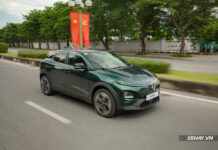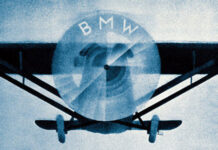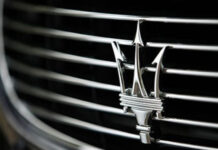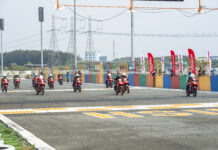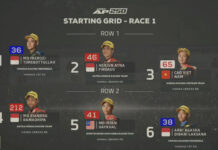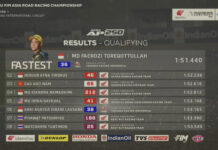Peugeot, the Largest Car Group in France, Celebrates its 200th Birthday
>> THACO Exclusively Distributes Peugeot Cars in Vietnam
>> 3 Automakers Granted Permission to Enter Vietnam in 2013
Peugeot, a well-known French car brand, is now a part of the PSA Peugeot Citroen Group with its headquarters in Paris, France. With a rich history that dates back to the late 19th century, Peugeot started as a bicycle manufacturer before expanding into car manufacturing.
The Birth of Peugeot
In 1882, Armand Peugeot, a graduate of the Paris electricity school, introduced the Le Grand Bi, a bicycle with large and small wheels. The Peugeot bicycles gained popularity for their unique and beautiful designs. At the same time, the Peugeot factory began developing engines and manufacturing cars.
In 1926, the bicycle and car manufacturing factories separated and operated independently. Armand Peugeot collaborated with Gottlieb Daimler and other speed enthusiasts to design and produce various car models. The first steam-powered three-wheeler was introduced at the 1889 International Exhibition, followed by gasoline and diesel engines.

Throughout its journey, Peugeot has experienced successes, changes, experiments, and challenges, which have contributed to its growth and establishment as a prominent industrial conglomerate in Europe.
Originating from Bicycles
Peugeot bicycles have long been known for their reputation and durability, making them the most powerful bicycle brand in France. Initially produced in 1882, Peugeot bicycles were exported under the Peugeot label until the 1980s, when the brand’s rights were sold to ProCycle in Canada. Although the brand is no longer allowed to use the Peugeot label, the bicycles are still produced in Europe by the Cycleurope group in Neuilly.
In addition to diamond frame bicycles, Peugeot also produces hybrid frame versions and bicycles designed for two or more people.
In 1882, Peugeot introduced the Grand Bi bicycle model, featuring a large front wheel and a small rear wheel. This unique design, with handlebars and pedals attached directly to the wheel axle, provided a challenging riding experience. However, Peugeot continued to improve its designs and expanded its production to engines and cars.

In 1889, Peugeot made history with the introduction of its first car, named after its inventors, Armand Peugoet and Léon Serpollet, at the Paris International Exhibition. This three-wheeler marked a significant milestone, coinciding with the 100th anniversary of the French Revolution.
Transition to Gasoline Engines
In 1890, Peugeot introduced the Type 2, a four-wheel, two-seater car powered by a gasoline engine. This model marked a shift towards using their own engines instead of Daimler’s. Peugeot continued to diversify its car models, including the production of two-seater and four-wheel cars. Peugeot’s advancements in the automotive industry earned them recognition and success in various races and exhibitions.
Peugeot continued to innovate and produce new car models, such as the Type 4, which featured rubber tires and was purchased by the king of Tunisia. The brand diversified its offerings, participating in races and winning prestigious awards.
Peugeot Automobile
In 1896, Armand Peugeot established Peugeot Automobile as a separate company focused on passenger cars and trucks. At the same time, small cars for his nephews continued to be produced under the family company, Les Fils de Peugeot Frères. Peugeot Automobile introduced new models with improved engines and designs that gained attention and acclaim in the automotive industry.
Armand Peugeot expanded his car manufacturing operations, opening new factories in Audincourt and Fives-Lille, France. These factories allowed for the production of various car models, as well as improvements in engine design and tire technology. Peugeot showcased their models at the first Paris Motor Show in 1898.
In 1901, Peugeot introduced the Type 36, a convertible model with a new straight 1-cylinder engine. This marked a transition to non-chain steering and the beginning of Peugeot’s production of 4-cylinder models. Peugeot’s innovative designs and commitment to producing high-quality cars were recognized at exhibitions and shows.
Strong Recovery After the War
After World War II, Peugeot faced challenges as their factories were used to produce vehicles and weapons for the German army. However, the company recovered and resumed production in 1948 with the introduction of the 203 model. This era marked the collaboration between Peugeot and Italy’s famous automobile design company, Pininfarina. Peugeot expanded its presence in the international market and formed partnerships with other manufacturers.

In 1974, Peugeot acquired a stake in Citroën, leading to the formation of the PSA Group. This alliance allowed Peugeot and Citroën to share technology while maintaining independent design. Peugeot continued to expand its portfolio and collaborations, solidifying its position in the automotive industry.

In the 1990s, Peugeot faced management challenges but continued to develop new models alongside their classic ones. With collaborations and partnerships, Peugeot aimed to cater to a higher-end market segment and expand its presence globally.
Thao Anh (TTTÐ/Source: Consolidated)











